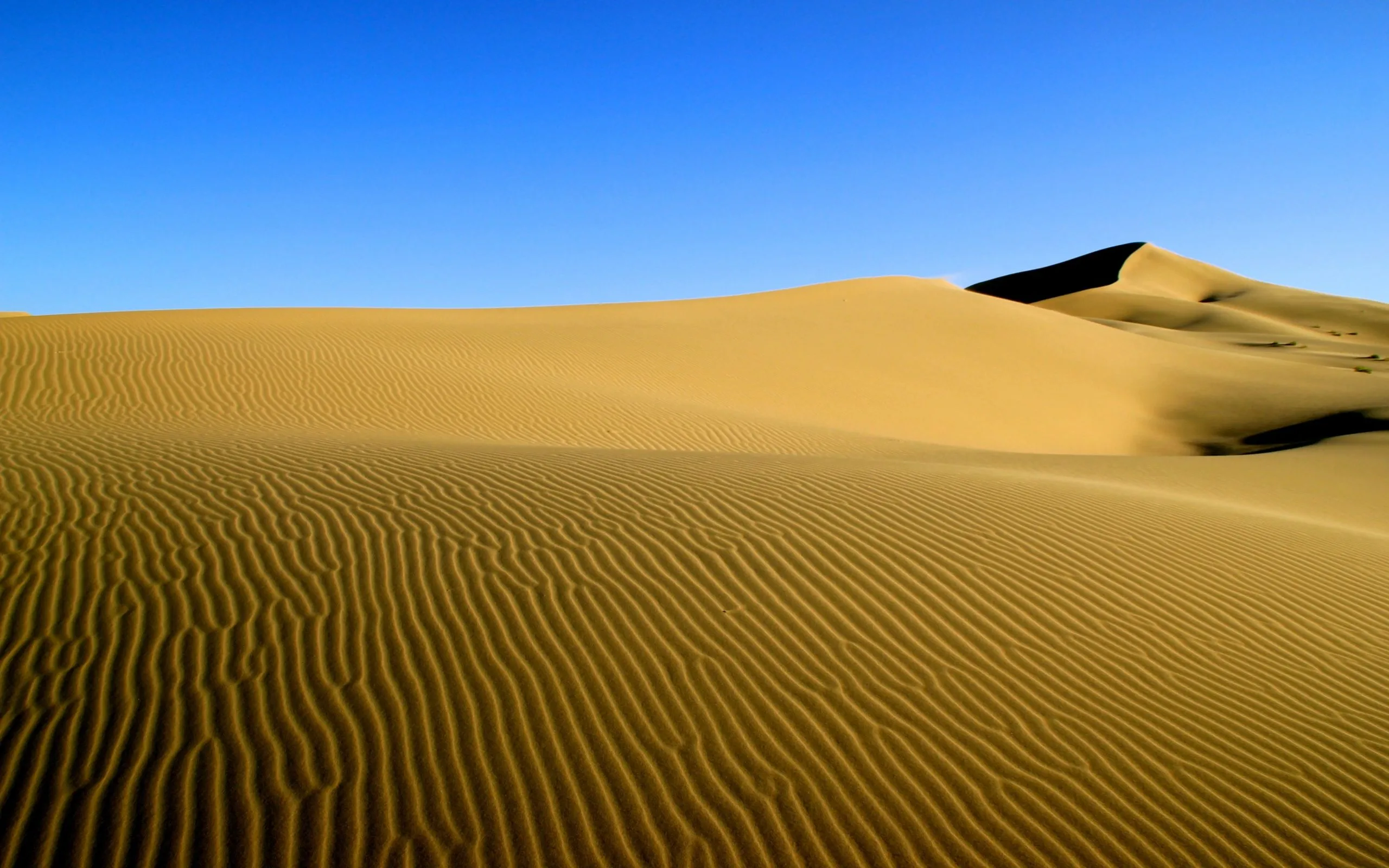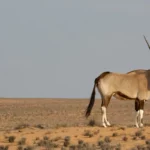Get ready to dive into the world of deserts in a fun and informative way! We’re going to take you on a trivia adventure that will uncover the secrets of sandy places around the world, like the Sahara and Atacama. You’ll learn about the cool plants and animals that call these dry lands home and the amazing cultures that have flourished in the desert over time. So buckle up and let’s explore the fascinating world of deserts together!
Desert Trivia
Think deserts are just endless piles of sand? Think again! These fascinating landscapes cover a whopping one-fifth of the Earth’s land – that’s like covering the entire North American continent twice over! And they’re anything but boring.
Forget what you think you know, because deserts come in four very different flavors:
| Desert Type | Description | Example |
|---|---|---|
| Hot Deserts | Scorching temperatures and little rain | Sahara Desert |
| Temperate Deserts | Hot summers, cool winters, and some rain | Mojave Desert |
| Coastal Deserts | Cool, humid air with little rain | Atacama Desert |
| Cold Deserts | Dry with frigid winters and short summers | Antarctic Desert |
Speaking of the Antarctic, did you know it’s actually the largest desert in the world? It puts all the others to shame with its icy dominance!
Back in the warmth, you might be surprised to learn that the sandy dunes we often picture only make up about 10% of the world’s deserts. The rest is a diverse mix of mountains, valleys, and even oases!
Life in the desert is tough, especially when temperatures soar. The Sahara Desert, the largest hot desert, can reach a scorching 104°F (40°C) in the summer. But that’s nothing compared to Death Valley in California and Nevada, which holds the record for the hottest temperature ever recorded on Earth: a mind-blowing 134°F!
To beat the heat, many desert animals, like foxes and snakes, have adapted to become creatures of the night. They sleep through the scorching days and come out to hunt and play when the sun goes down.
So the next time you think of a desert, remember these fascinating facts. They’re a testament to the diversity and wonder of our planet!
Did you know that the world’s largest desert is actually a cold desert? fun facts about the desert
Geography
Picking up where we left off on our exploration of deserts, let’s dive a little deeper into these fascinating landscapes. You might picture a desert as a desolate wasteland, but that’s not quite right. Deserts are actually bustling ecosystems with a surprising amount of life, it’s just a different kind of life than what we’re used to. Found on every continent, these unique environments span from scorching sand dunes to icy polar landscapes, showing off the amazing diversity of our planet.
Think of a desert as a giant canvas painted with vibrant colors and textures. Imagine shimmering dunes rolling like golden waves under the intense sun. Life finds a way, even in these harsh conditions. Resilient plants, from towering cacti to sprawling succulents, have developed incredible ways to survive. They’ve become masters of water conservation! And the animals? They’ve adapted too. Many creatures are nocturnal, avoiding the heat of the day, and they’ve developed super senses to navigate the challenging terrain.
The world of deserts is full of surprises. For example, did you know that the Sahara Desert, vast and impressive as it is, isn’t the largest desert on Earth? That title actually goes to the Antarctic Desert, a massive frozen wilderness. And while those iconic sand dunes are mesmerizing, they actually cover only a small portion of the world’s deserts.
Deserts are incredibly diverse. Each one has its own unique personality shaped by centuries of natural forces. Take the Sahara, for instance, famous for its enormous sand dunes. Then there’s the Kalahari Desert, dotted with lush oases bursting with life. On the other end of the spectrum, we have the Antarctic Desert, the coldest and driest desert on the planet – a frozen world with mind-bogglingly low temperatures.
Don’t underestimate the importance of deserts! Despite their dryness, they play a vital role in keeping our planet healthy. They act as natural barriers, stopping invasive species in their tracks and protecting delicate ecosystems. Plus, they have a big influence on climate regulation, affecting rainfall patterns and impacting weather systems all over the globe.
Unique Characteristics of Deserts: Adapting to Extremes
Life in the desert is a constant push and pull, a delicate dance between scorching sun and limited resources. It’s tough out there! Yet, desert dwellers have become masters of adaptation, showcasing some seriously impressive survival strategies. These aren’t just cool facts—they’re a testament to the sheer resilience of life itself.
Think about it: How do you survive in a place where water is scarce and the sun beats down relentlessly? Desert animals have figured it out, evolving incredible ways to conserve water, manage their energy, and beat the heat.
Let’s dive into five key survival tactics employed by these desert champions:
1. Water Conservation: Every Drop Counts
In the desert, wasting water is a big no-no. Animals here have become experts at making every drop count. For instance, their kidneys are like high-powered filtration systems, producing super-concentrated urine to minimize water loss. Even their droppings are drier than usual, containing less than half the water of other animals. Talk about efficiency!
2. Energy Efficiency: Slow and Steady Wins the Race
Imagine being constantly active in the scorching heat. You’d burn through energy reserves in no time! To avoid this, many desert mammals have mastered the art of “torpor.” It’s like hitting the pause button on their metabolism, allowing them to conserve energy and stay hydrated during the hottest parts of the day.
3. Temperature Control: Built-in Cooling Systems
Ever notice how some desert animals have remarkably large ears? It’s not just for looks! Those oversized ears act like radiators, dissipating heat and helping them stay cool. And it’s not just about external features. Thick fur coats and special layers of skin provide insulation, acting like a natural barrier against the extreme temperatures.
4. Night Owls and Early Birds: Avoiding the Heat
When the sun’s up, the desert heats up. It’s simple logic, right? So, many animals, like owls and kangaroo rats, have adapted to become nocturnal. They’re most active during the cooler nighttime hours, avoiding the intense daytime heat.
5. Home Sweet Home: Shelter from the Storm
Finding shelter is crucial in the desert, and some animals take it to the next level. Take the sociable weaver bird, for example. They construct massive, multi-chambered nests that provide a cool and comfortable haven from the harsh elements. Talk about luxury desert living!
| Feature | Adaptation | Benefit | Example |
|---|---|---|---|
| Water Scarcity | Concentrated urine and dry feces | Minimizes water loss | Desert rodents |
| Extreme Temperatures | Torpor (reduced metabolism) | Conserves energy and water | Many desert mammals |
| Intense Heat | Large ears, thick coats, specialized skin layers | Efficient heat dissipation and insulation | Fennec foxes, camels |
| Scorching Daytime Sun | Nocturnal or crepuscular activity patterns | Avoids peak heat hours | Owls, kangaroo rats |
| Limited Shelter | Elaborate burrow or nest construction | Provides protection and temperature regulation | Sociable weaver birds, desert tortoises |
These are just a few examples of the incredible adaptations that allow life to thrive in even the harshest environments. The next time you think about the desert, remember that it’s not just a barren wasteland – it’s a testament to the remarkable resilience and adaptability of life on Earth.
Desert Ecosystems: A Tapestry of Life in the Balance:
1. Desert Flora: Tenacious Survivors of Arid Environments
Imagine a place where rain is a luxury and scorching sun is a daily reality. That’s life in the desert for plants! But these plants are tough cookies – they’ve come up with ingenious ways to not only survive but thrive in these challenging conditions. Some, like cacti, have thick, waxy skins to hold onto precious water, while others have deep roots that spread far and wide to seek out even the smallest drop. And let’s not forget about those spines – a prickly defense against hungry animals looking for a snack.
2. Desert Fauna: Remarkable Adaptations for Survival
The desert heat might make you want to stay put all day, but not for desert animals! They’ve got a different strategy: if you can’t beat the heat, avoid it! Many animals are most active at night when temperatures drop, using the cool darkness to hunt for food. And speaking of staying cool, have you ever noticed how sleek and slender many desert animals are? It’s not just for looks – a smaller body means less surface area exposed to the baking sun, helping them conserve water.
3. Desert Food Webs: Delicate Connections in a Harsh World
Life in the desert is a delicate dance of interconnectedness, what we call a food web. It all starts with the plants – even with their limited resources, they provide food and shelter for a surprising variety of creatures. Small critters like insects and rodents munch on plants, becoming a tasty meal for larger predators like snakes, birds of prey, and foxes. It’s a delicate balance, each creature playing a vital role in keeping the ecosystem healthy.
4. Threats to Desert Ecosystems: Human Impacts and Climate Change
Sadly, even the toughest ecosystems face challenges, and deserts are no exception. Human activities, from mining to urban sprawl, can disrupt the delicate balance of these environments. Overgrazing, where too many livestock are allowed to graze in one area, can strip the land bare, leaving it vulnerable to erosion and making it harder for plants to grow. And then there’s climate change, a global issue that intensifies the existing challenges deserts face, bringing hotter temperatures, less predictable rainfall, and even new species that can outcompete native plants and animals.
5. Conservation Efforts: Protecting Fragile Desert Life
Despite these threats, there’s hope! People are working hard to protect these unique ecosystems. One important step is creating protected areas, like national parks and reserves, where human activities are limited, and nature can thrive. Other efforts focus on restoring damaged areas, planting native species, and educating people about the importance of deserts and how to enjoy them responsibly. It’s a team effort that requires everyone doing their part to ensure these incredible landscapes continue to amaze us for generations to come.
FAQ
Q1: What defines a desert, and what are their key characteristics?
A1: A desert is a region that receives minimal precipitation, typically less than 10 inches annually. Deserts are characterized by their aridity, extreme temperatures, and sparse vegetation. They cover approximately one-fifth of Earth’s land surface and are found on every continent.
Q2: What are the different types of deserts?
A2: Deserts can be classified into four main types: hot and dry deserts, semiarid deserts, coastal deserts, and cold deserts. Hot and dry deserts, such as the Sahara, experience high temperatures and very little rainfall. Semiarid deserts have slightly more rainfall and vegetation than hot deserts. Coastal deserts, such as the Atacama Desert, are located along the coast and receive moisture from the ocean. Cold deserts, such as the Gobi Desert, have low temperatures and sparse vegetation.
Q3: Which is the largest desert in the world?
A3: The largest desert in the world is the Antarctic Polar Desert, covering an area of over 14 million square kilometers. It is a cold desert located in Antarctica and is characterized by its extreme temperatures, low precipitation, and icy landscape.
Q4: What types of plants and animals have adapted to survive in desert environments?
A4: Desert flora and fauna have evolved unique adaptations to survive in the harsh desert conditions. Desert plants, such as cacti and succulents, have specialized structures to store water and protect themselves from the sun. Desert animals, such as camels and lizards, have physiological adaptations that allow them to conserve water and tolerate extreme temperatures.
Q5: What are the major threats to desert ecosystems, and what can be done to protect them?
A5: Deserts face various threats, including climate change, habitat loss, and overexploitation of resources. Climate change is altering precipitation patterns and increasing temperatures in deserts, which can disrupt ecosystems and threaten species. Human activities, such as mining and agriculture, can also lead to habitat loss and degradation. Conservation efforts, such as protected areas and sustainable land management practices, are essential to safeguard these fragile ecosystems.
- Discover Long Black Pepper: Flavor & Health Benefits - April 25, 2025
- Shocking Twists: The Grownup Review: Unreliable Narration - April 25, 2025
- A Quiet Place Book vs Movie: A Deep Dive - April 25, 2025

















Comments are closed.